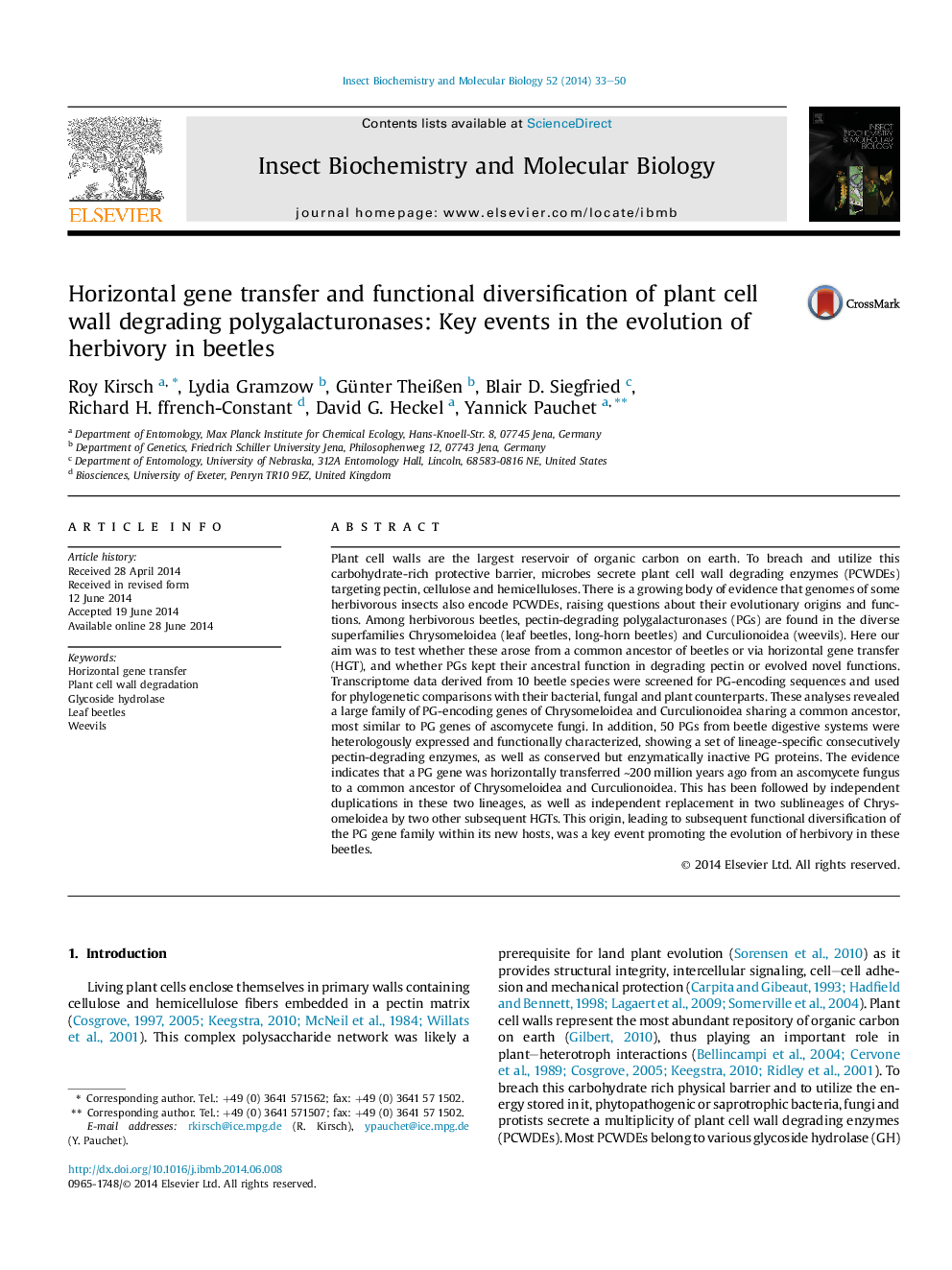| کد مقاله | کد نشریه | سال انتشار | مقاله انگلیسی | نسخه تمام متن |
|---|---|---|---|---|
| 1982089 | 1539500 | 2014 | 18 صفحه PDF | دانلود رایگان |
• Multiple horizontal gene transfers of genes coding for PGs during animal evolution.
• PGs diversified within the Phytophaga beetles following horizontal gene transfer.
• The Phytophaga beetle PG clade contains active and non-active pectolytic enzymes.
• PG phylogeny reveals birth-and-death evolution and correlates with PG activity.
• Two independent losses and re-acquisitions of PG genes in Chrysomeloidea beetles.
Plant cell walls are the largest reservoir of organic carbon on earth. To breach and utilize this carbohydrate-rich protective barrier, microbes secrete plant cell wall degrading enzymes (PCWDEs) targeting pectin, cellulose and hemicelluloses. There is a growing body of evidence that genomes of some herbivorous insects also encode PCWDEs, raising questions about their evolutionary origins and functions. Among herbivorous beetles, pectin-degrading polygalacturonases (PGs) are found in the diverse superfamilies Chrysomeloidea (leaf beetles, long-horn beetles) and Curculionoidea (weevils). Here our aim was to test whether these arose from a common ancestor of beetles or via horizontal gene transfer (HGT), and whether PGs kept their ancestral function in degrading pectin or evolved novel functions. Transcriptome data derived from 10 beetle species were screened for PG-encoding sequences and used for phylogenetic comparisons with their bacterial, fungal and plant counterparts. These analyses revealed a large family of PG-encoding genes of Chrysomeloidea and Curculionoidea sharing a common ancestor, most similar to PG genes of ascomycete fungi. In addition, 50 PGs from beetle digestive systems were heterologously expressed and functionally characterized, showing a set of lineage-specific consecutively pectin-degrading enzymes, as well as conserved but enzymatically inactive PG proteins. The evidence indicates that a PG gene was horizontally transferred ∼200 million years ago from an ascomycete fungus to a common ancestor of Chrysomeloidea and Curculionoidea. This has been followed by independent duplications in these two lineages, as well as independent replacement in two sublineages of Chrysomeloidea by two other subsequent HGTs. This origin, leading to subsequent functional diversification of the PG gene family within its new hosts, was a key event promoting the evolution of herbivory in these beetles.
Figure optionsDownload high-quality image (240 K)Download as PowerPoint slide
Journal: Insect Biochemistry and Molecular Biology - Volume 52, September 2014, Pages 33–50
